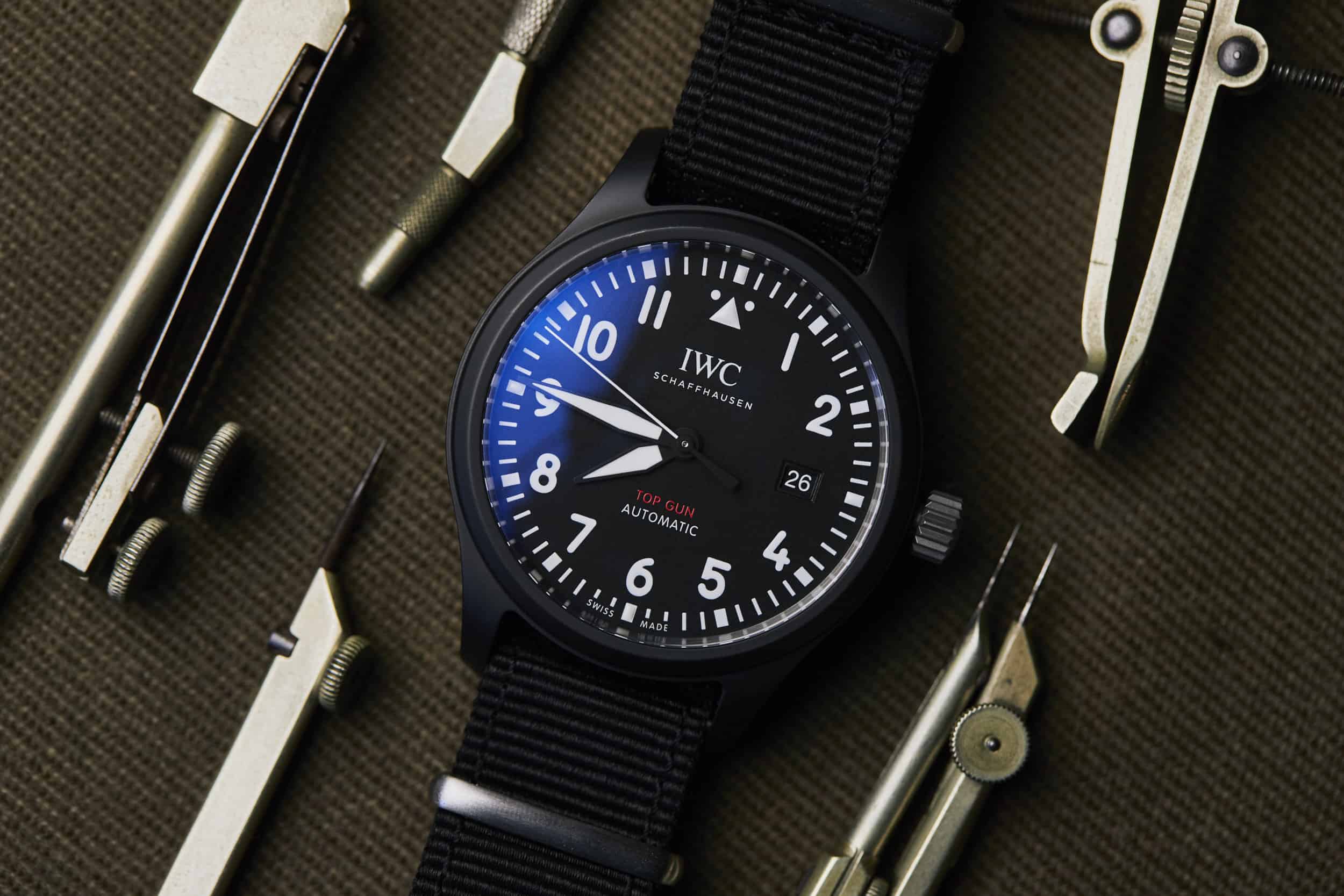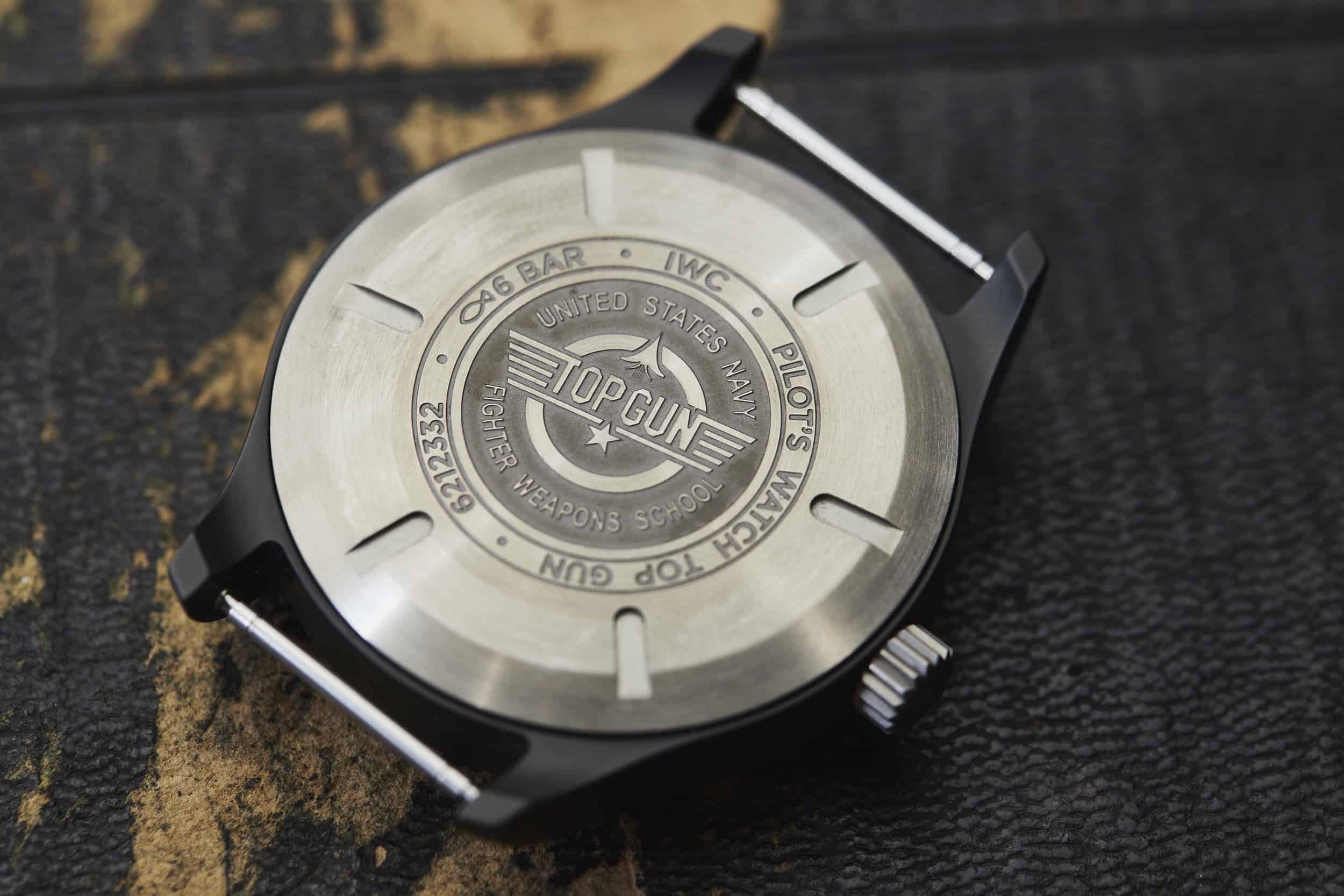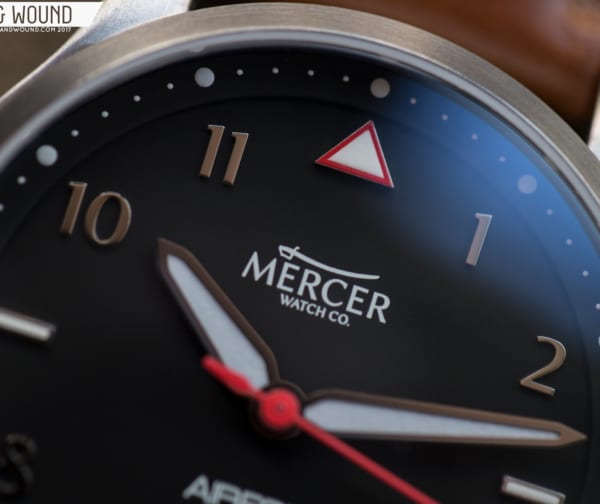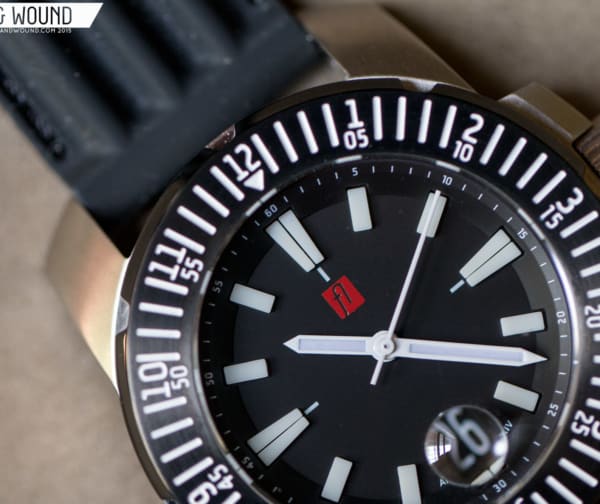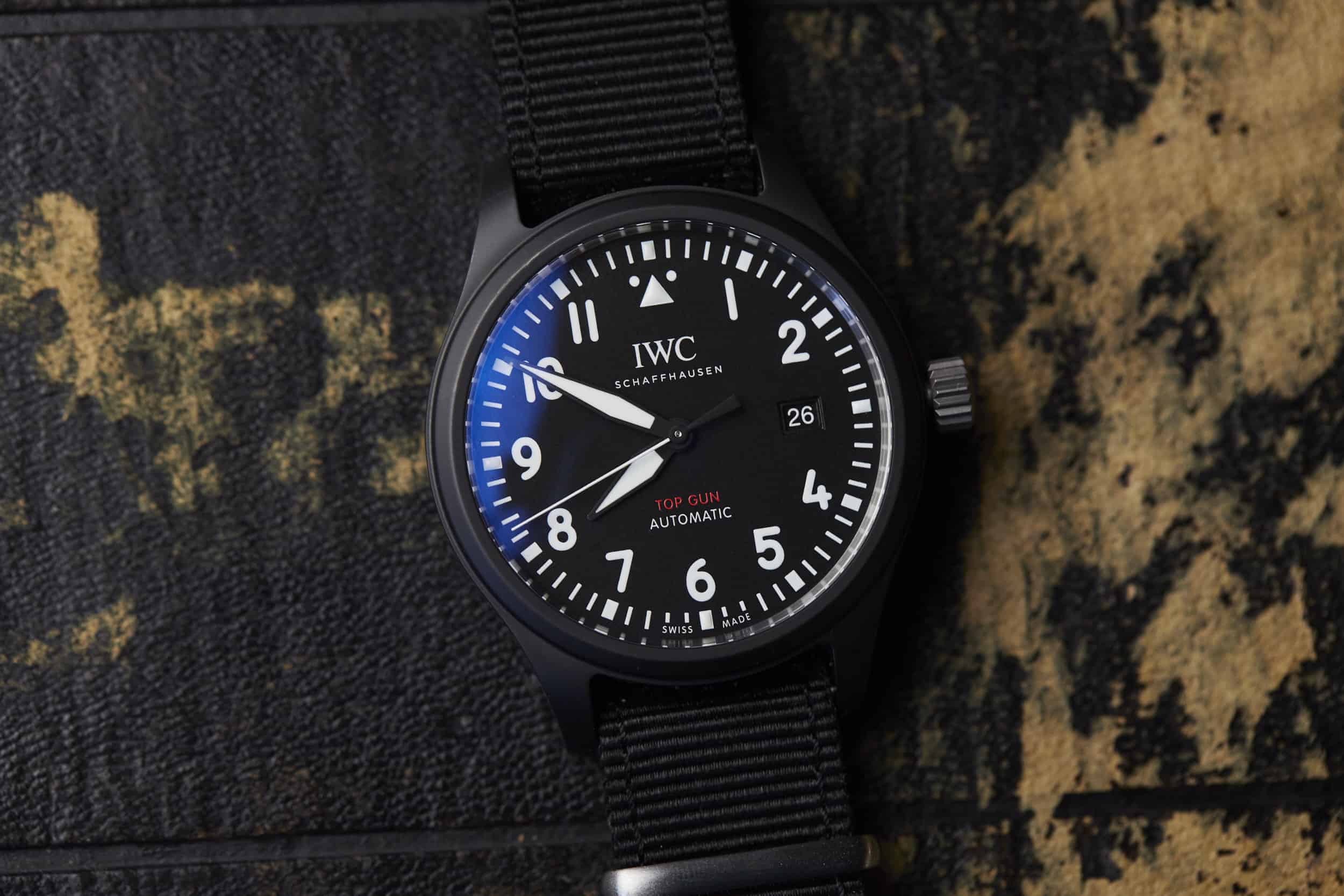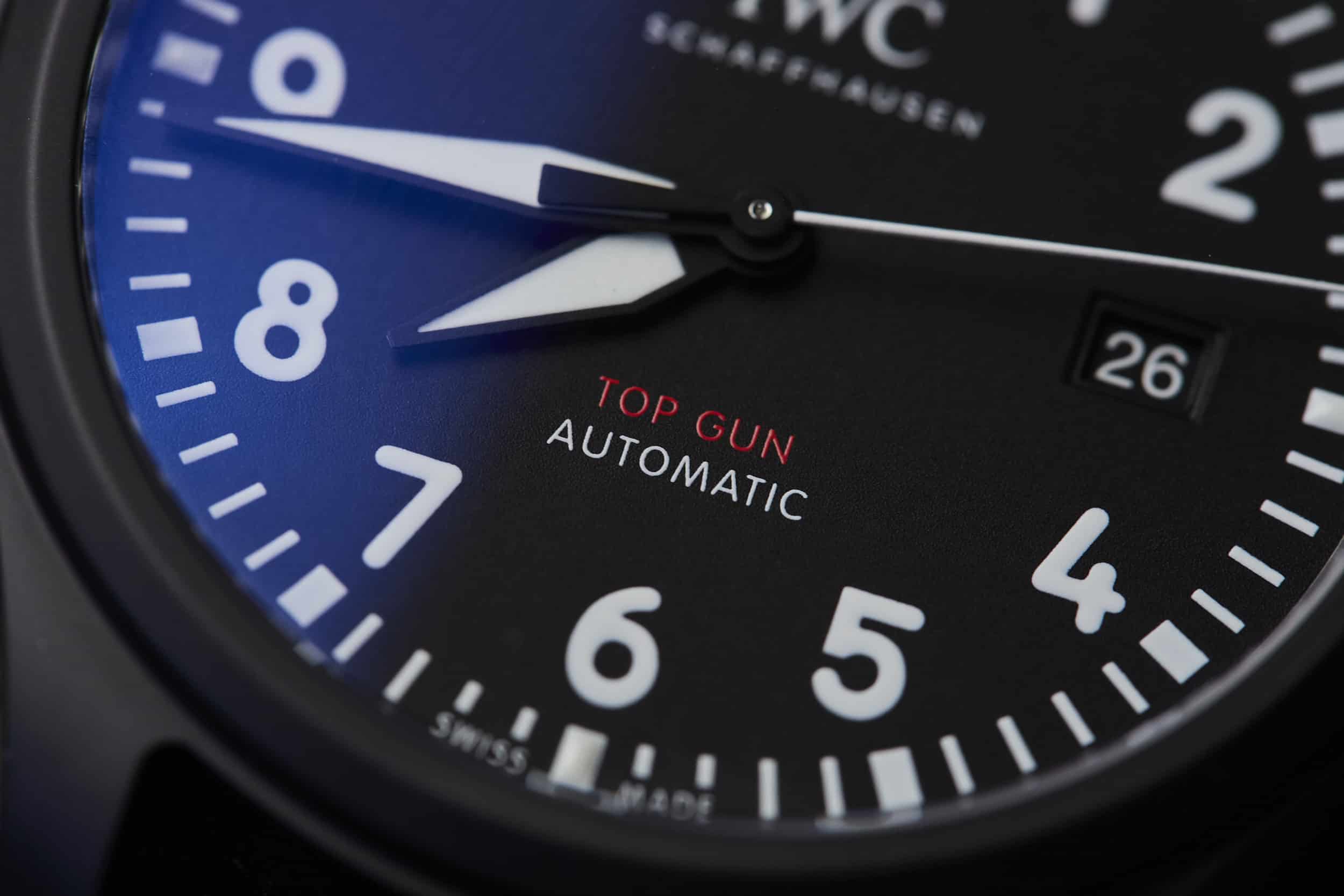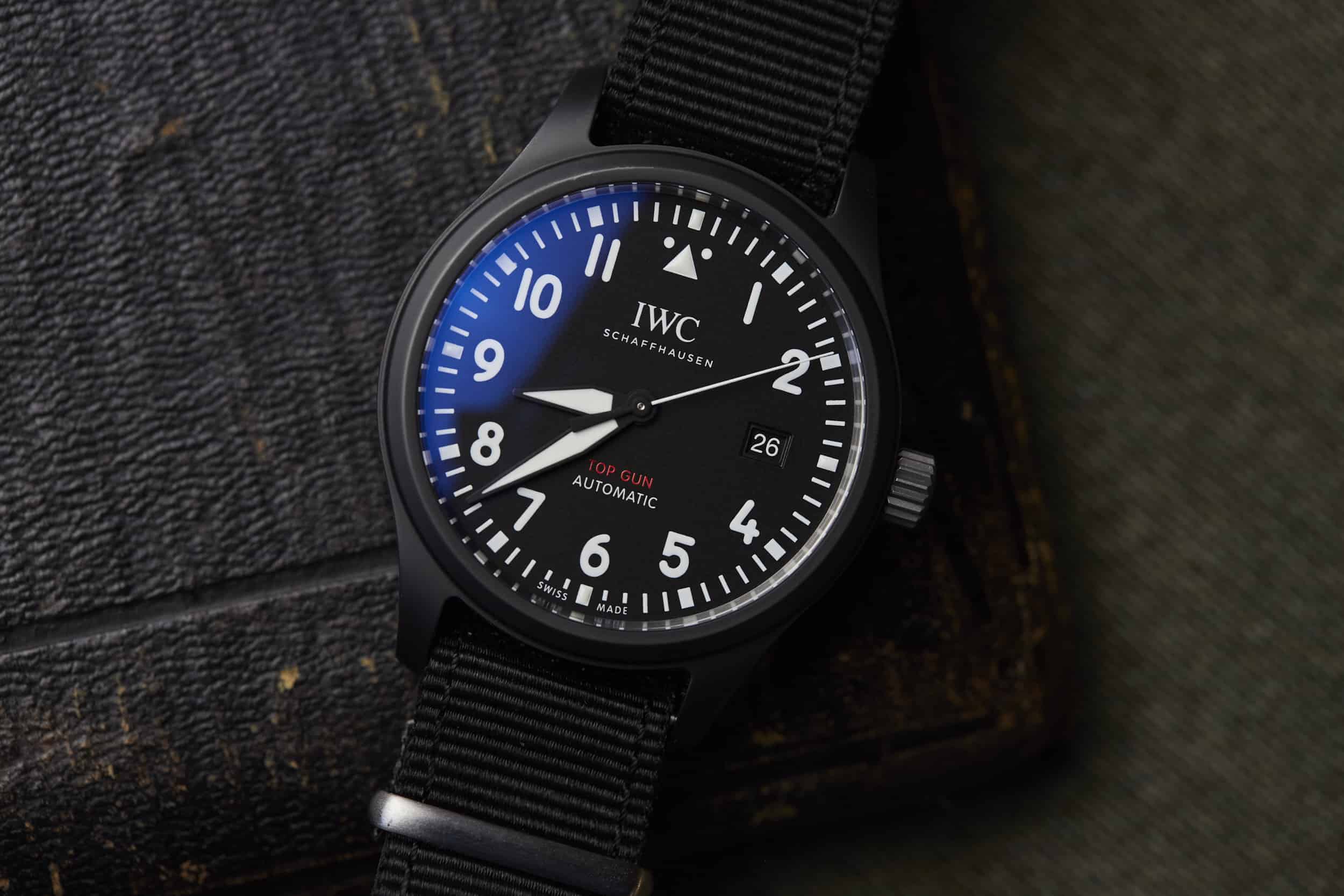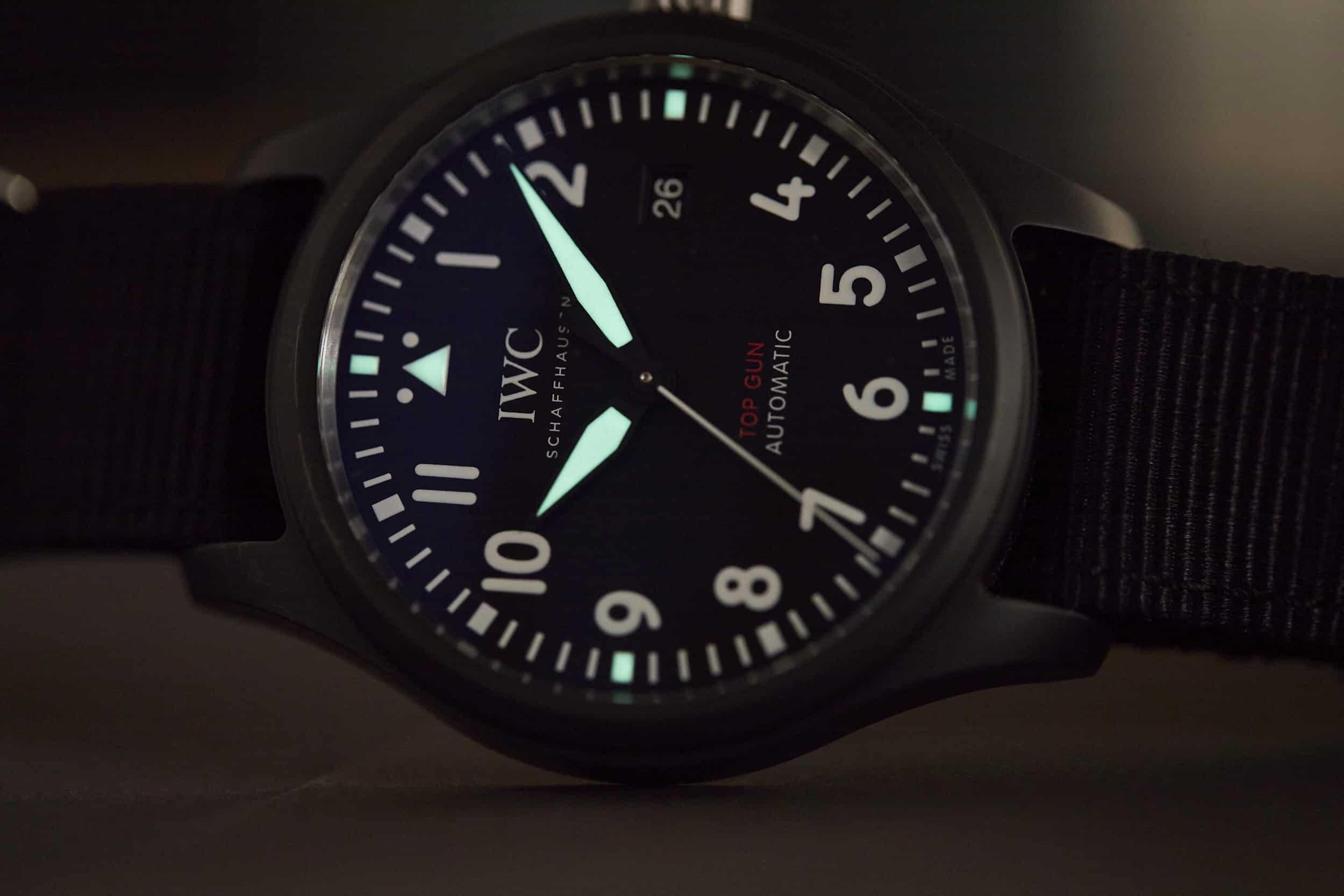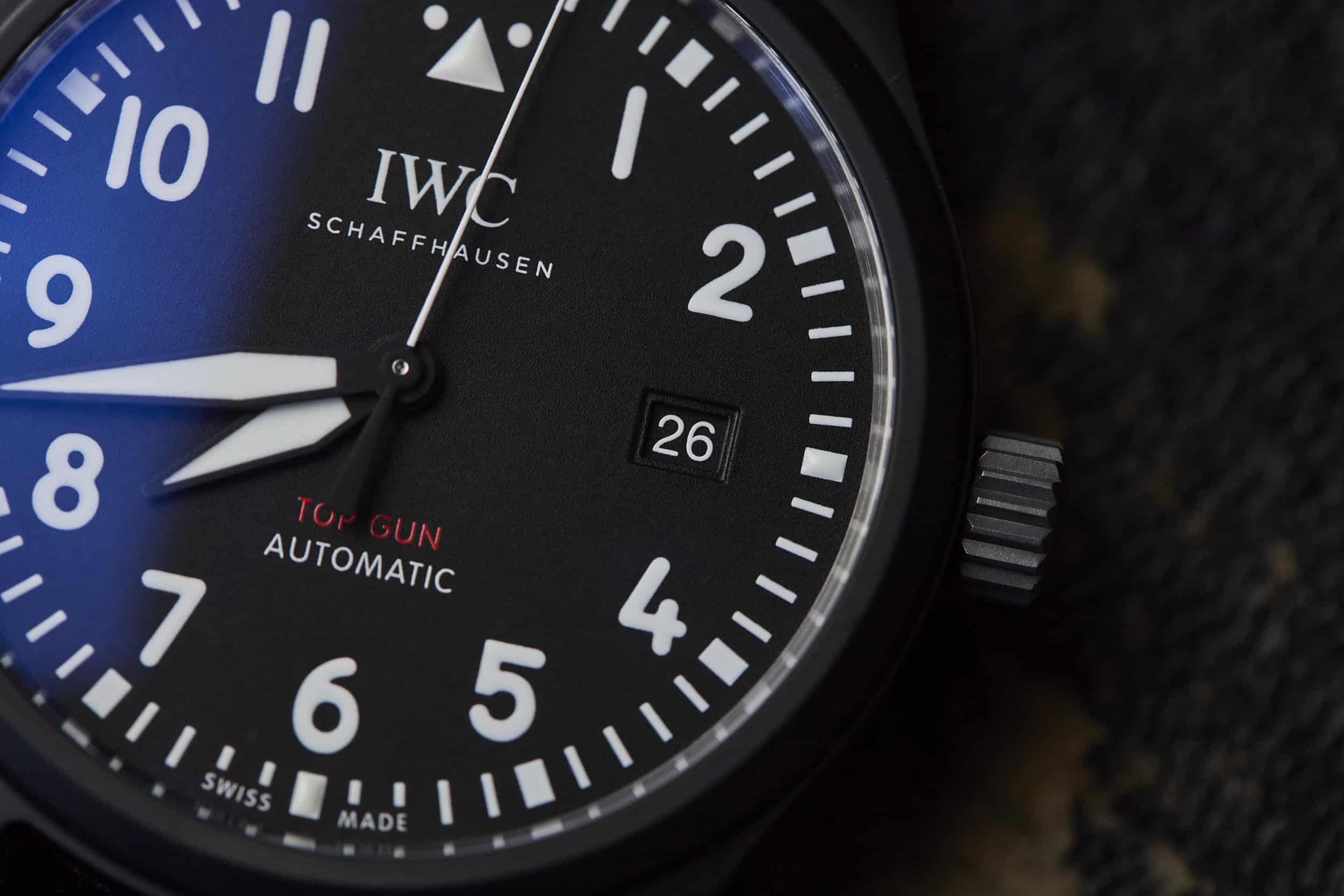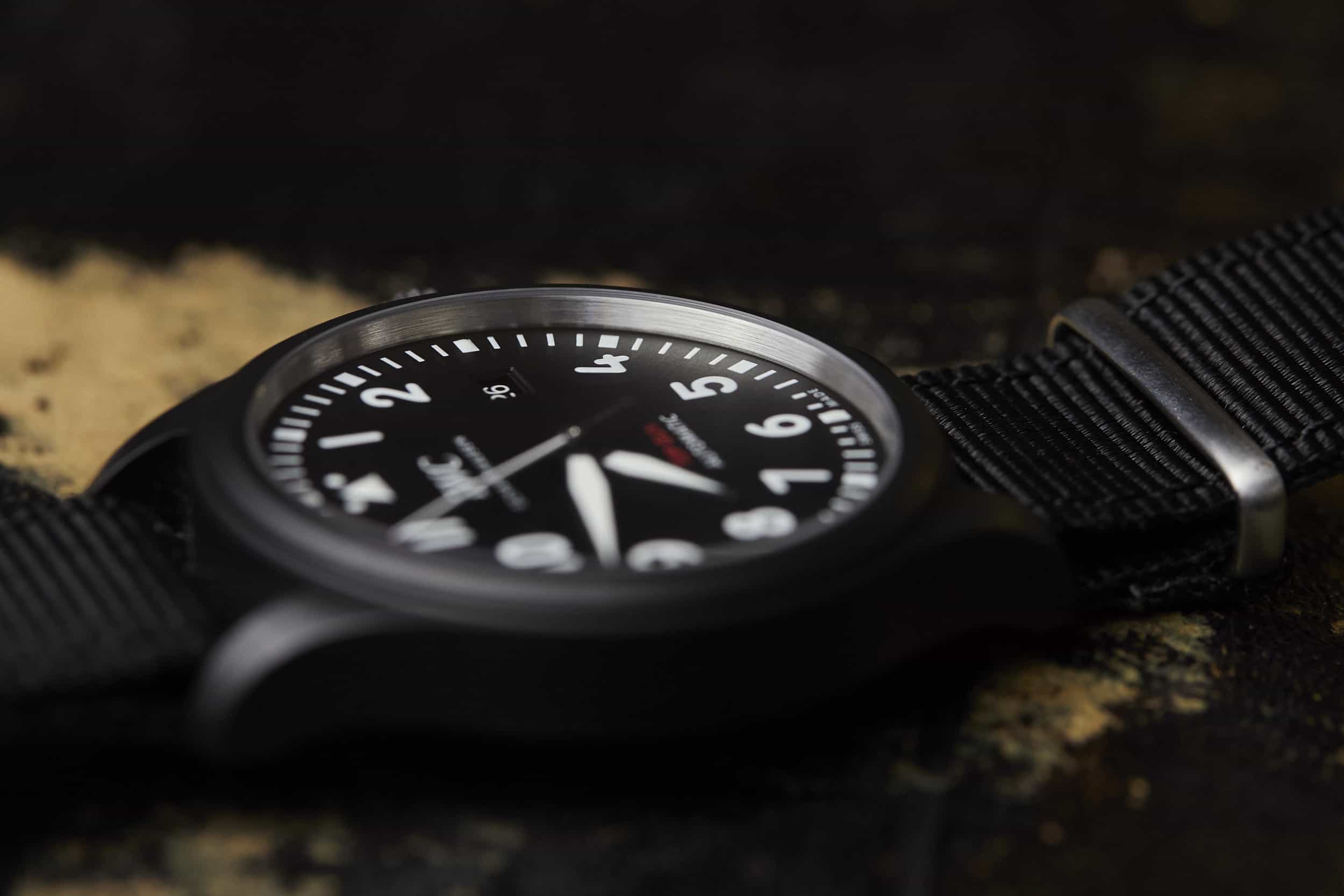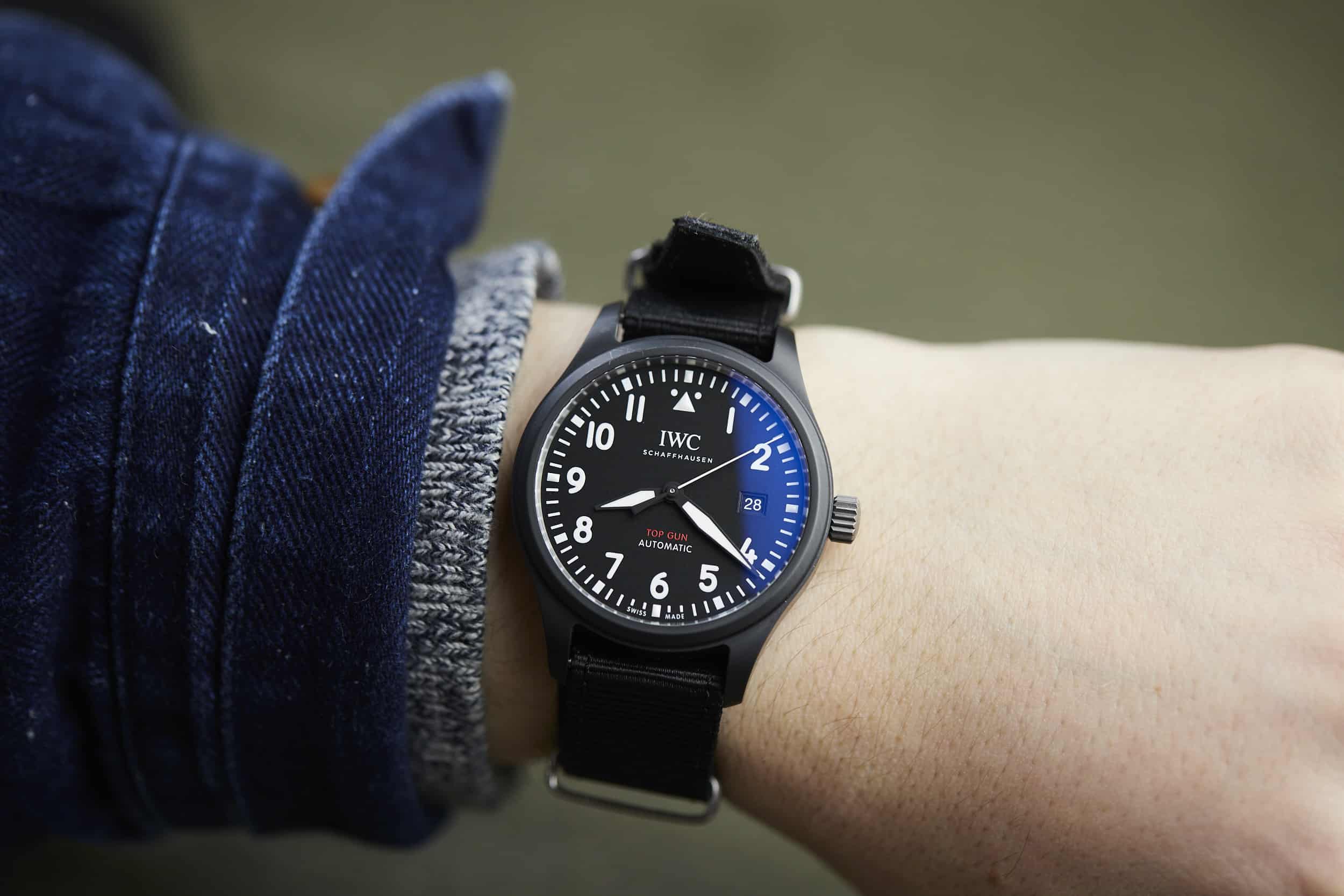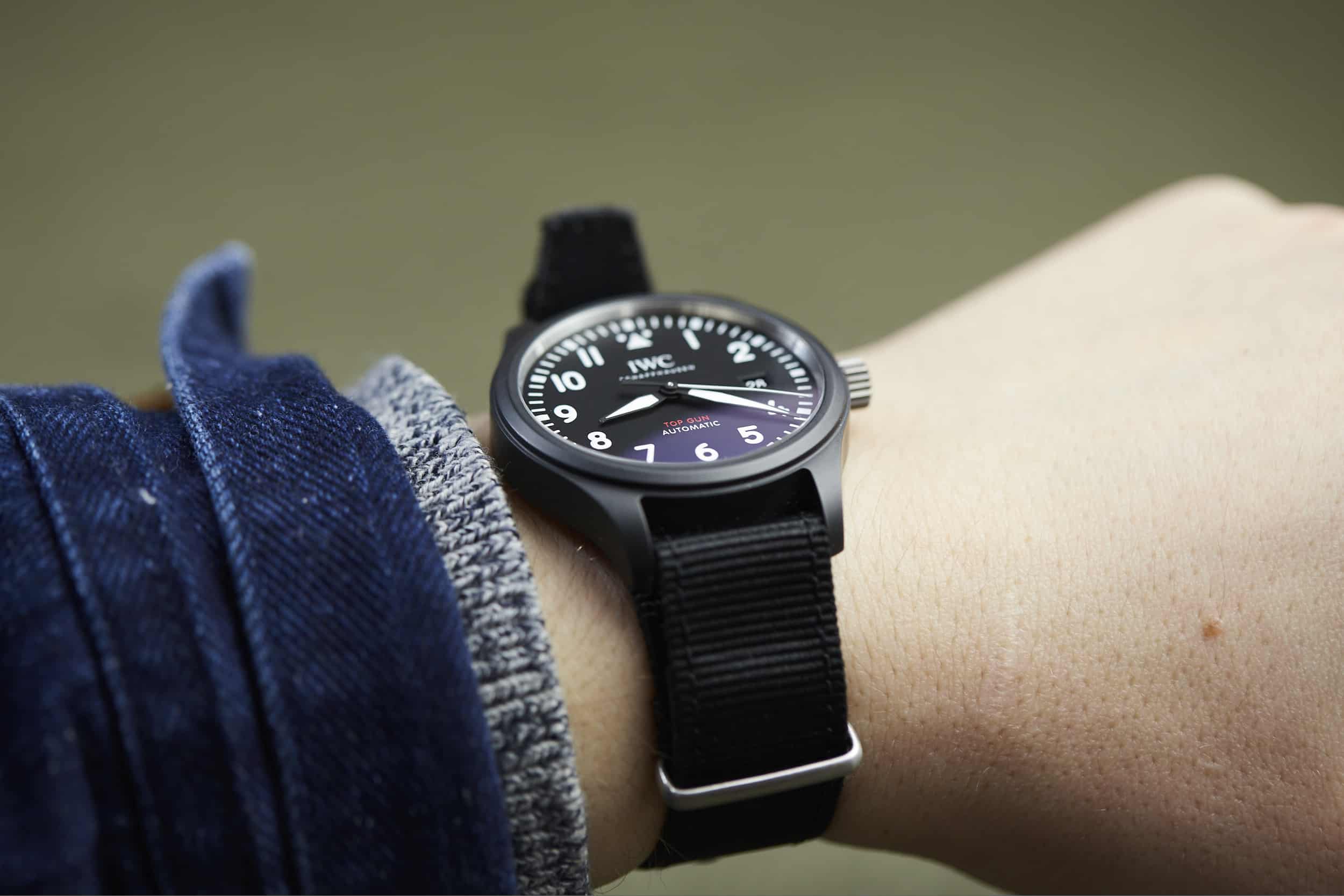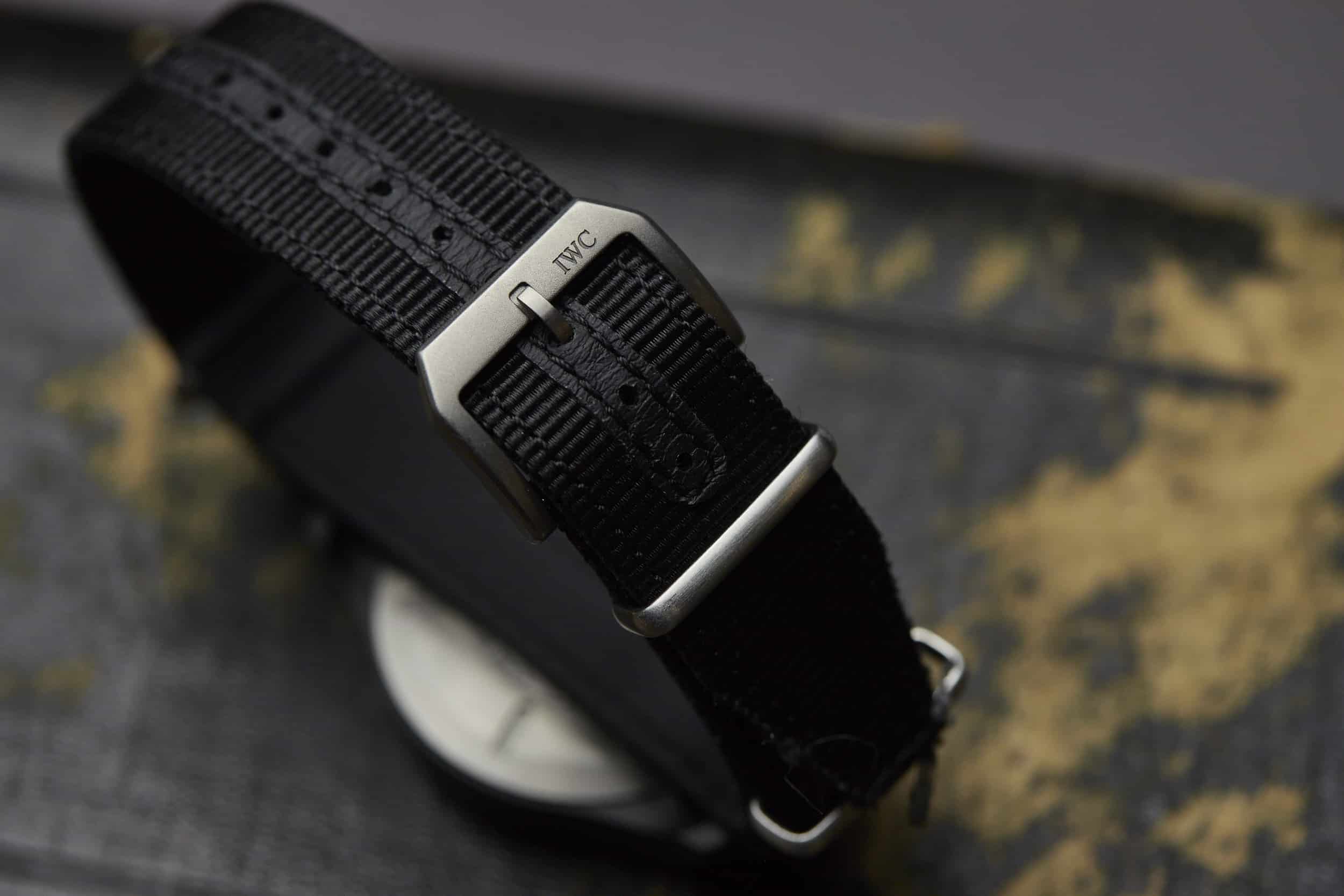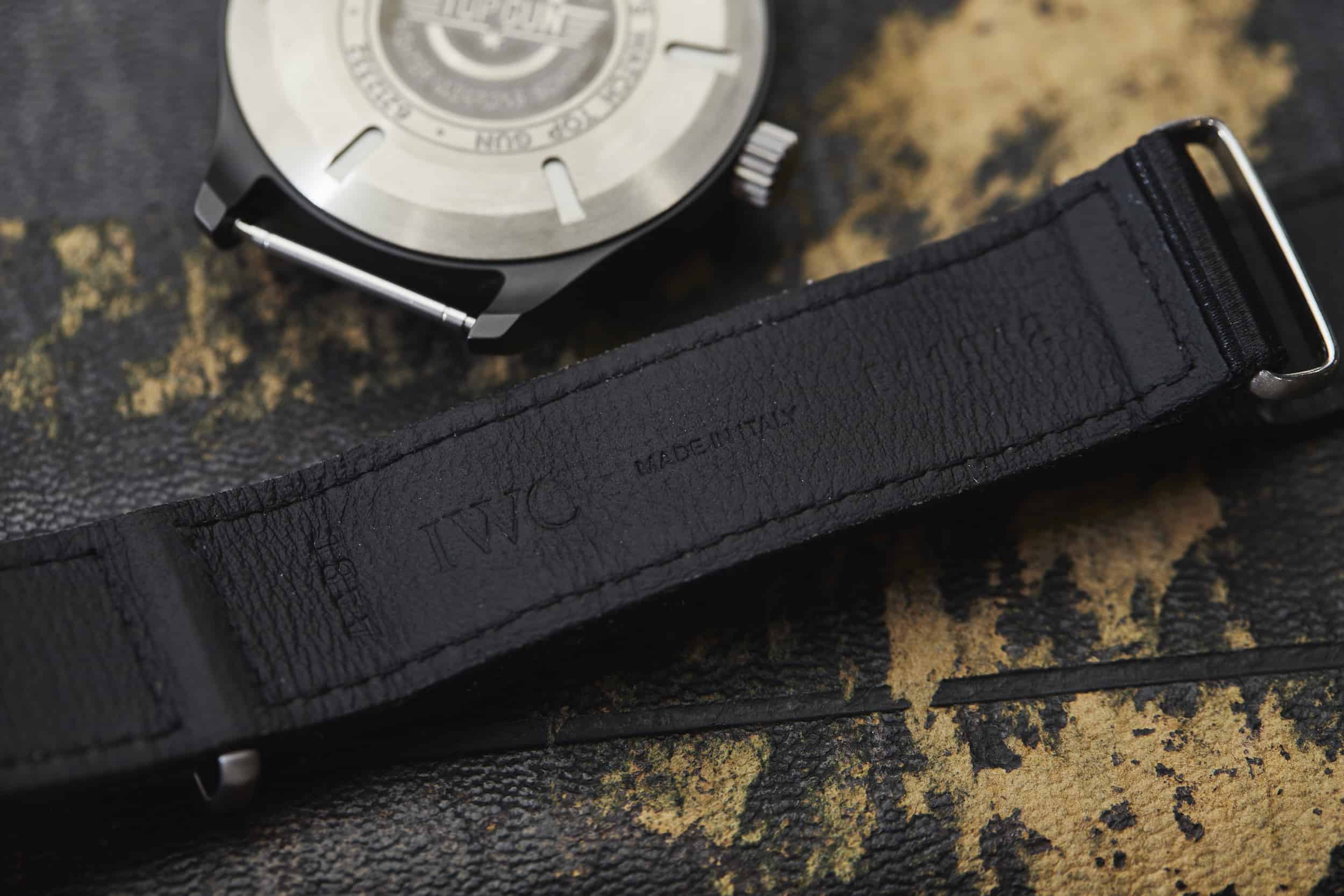IWC presented new Top Gun watches during SIHH in 2019, introducing their Ceratanium material for the first time in the Pilot’s Watch Double Chronograph. Among the new releases was the “Mojave Desert” chronograph featuring a sand-colored ceramic, and the black ceramic Top Gun Automatic, serving as an entry point to the collection. Drawing on IWC’s well established Pilot’s Watch design language, the Automatic offered a familiar face while using the brand’s new(ish) 32110 in-house caliber. A few years later, we’re taking a look back at the Automatic Top Gun to see how it fares today, both as a Top Gun entry point, and as an IWC Pilot’s Watch.
Review: The IWC Automatic Top Gun
Review: The IWC Automatic Top Gun
IWC & Top Gun
It’s worth exploring the relationship between IWC’s Top Gun collection, and the US Navy Strike Fighter Tactics Instructor program, aka Top Gun, from which the collection takes its name. The US Navy granted IWC exclusive license to manufacture Top Gun labeled timepieces in 2005, with the first watches appearing with the IWC Pilot’s Watch family in 2007 in the form of a Double (rattrapante) Chronograph. The driving force here is to produce watches befitting the elite pilots enduring the rigors of the nine week Strike Fighter Tactics Instructor (SFTI) program (which likely involves less shirtless beach volleyball than you’re imagining).

IWC was granted time on the US Navy’s aircraft carrier USS Ronald Reagan to get a better sense of the training routine of these pilots, an exercise that laid the groundwork for the unique materials and appearance of Top Gun watches. The black ceramic cases and matte textures are born from the need to eliminate any potential reflective surface that could interfere with the pilot’s visibility. The material must also be able to withstand the knocks that undoubtedly come with the high G forces experienced inside the cockpit during training.
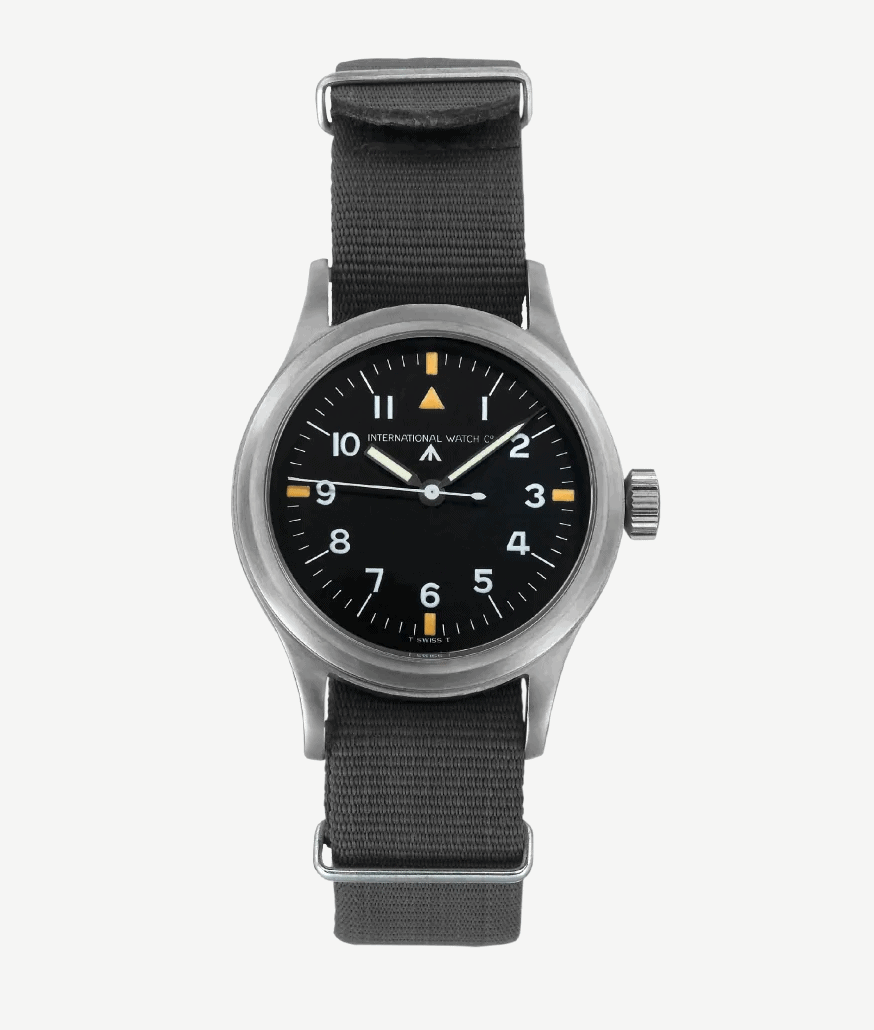
Unlike the classic Pilot’s Watch formula developed by IWC in 1949 with the iconic Mark 11, Top Gun watches are designed and built around the modern, high tech environments occupied by pilots today. However, the design language employed does indeed lean on the brand’s well established Pilot’s Watch identity, and this is especially evident in the Automatic Top Gun presented here.
For the curious, the license fee paid by IWC to the US Navy goes to a charitable organization supporting retired Top Gun pilots.
The Top Gun Automatic
At a glance, the Automatic Top Gun is clearly identifiable thanks to the shared dial design found throughout IWC’s expansive Pilot’s Watch family. And for good reason. It’s a design that borrows heavily from the original Mark 11 developed for RAF pilots in 1948. Each hour is clearly marked with its Arabic numeral, each minute gets a hash mark, and at 12 o’clock we find the triangle accompanied by two dots on either side. That’s pretty much it, and that’s by design.
The appeal of the Pilot’s Watch is its simplicity and practicality. It’s easy to read at a glance, there are no imposing complications, and its demure stature keeps it flying under the radar (sorry) when not in use. Of course, the OG Mark 11 had no date, and its hour and minute hands were far simpler, but the design as a whole holds up remarkably well more than 70 years later. To my eye, there’s nothing that immediately dates the design of the Mark 11, and it looks as relevant as ever today as it did in ‘48. In fact, I see an approachable nature in the Mark 11 that is somehow lost on its modern counterparts, and that’s not a knock on IWC or their modern watches, but rather a testament to the power of a great design.
If I may sidetrack for a moment. We laude Omega for their modern Speedmaster Professional as they’ve managed to preserve the finer details of the original model to a remarkable degree. While the Speedmaster brand itself has branched into all manner of ridiculous directions, the Professional model has remained a stalwart of the original vision. I say this because the Mark 11 was just such a design, and I lament the fact that I don’t see it preserved as such within the modern line of IWC Pilot’s Watches. The influence is clearly there, but devil is in the finer details that remain absent on the newer watches.
I notice the same thing with the “Tribute to 3705” – which does a remarkable job of capturing the original 3705 in modern trappings, but it’s clearly not meant as a re-issue or re-creation. It’s something else entirely, it’s ‘inspired by’. This is obviously intentional on the part of IWC, who aren’t in the business of releasing 1:1 remakes of their historic designs. While I prefer the proportions of the smaller registers and overall dimensions of the actual 3705, the “Tribute” makes changes that provide greater levels of legibility and usability, as in, the changes are driven by function.
The functional changes seen in the modern Mark XVIII and Spitfire as well as the Automatic Top Gun are seen in the design of the hour and minute hands, the inclusion of a date complication, and the proportions of the minute and hour bars and hashes at the edge of the dial. These are small things, but as noted, there’s not much else going on here, so each small change adds up to a big difference.
Let’s talk about these hands. The Mark 11 features a thinner, squared off hour hand, and a pencil minute hand. They define the look of the watch and stand as unique identifiers to IWC heritage. They are wholly unique, and IWC reserves them for ‘tribute’ watches produced in limited quantities. The wide sword style hand design featured throughout the Pilot’s Watch collections today are consistent, and provide a dramatic shift in appearance from the older design. Preference is subjective, of course, but to my eye the squared off baton and pencil hands offer a stronger identity that IWC should be owning. Conversely, the hands they are using are legible and carry a healthy amount of lume, so an easy argument for the change really boils down to practicality.
The matte black dial gets minimal branding here with the logo at 12 o’clock and the ‘automatic’ label at 6 o’clock. A bright red ‘Top Gun’ provides the only hint of color in sight. An interesting point of material contrast happens at the rehaut, which appears to be brushed steel, and may help secure the crystal against displacement by drop in air pressure. It feels a little raw in appearance compared to the rest of the watch, but I kind of like it as a result.
The other little-thing-that’s-maybe-actually-a-big-thing is the date window. The small aperture displays a color matched date disc, content to not bring unwanted attention to itself. The way it’s implemented is just fine and works rather well. The issue comes with where it’s implemented. The window itself is at the 3 o’clock position, meaning that hour numeral is absent from the dial, and while all other numerals are a consistent distance away from their hour markers, the date window appears to be wandering toward the center of the dial, with just enough open space between itself and 3 o’clock hour maker as to call an uncomfortable amount of attention to itself. You could argue I’m being excessively nit-picky here, and you’d be absolutely right, but again, there’s not a lot else going on with this dial, so every little detail matters here. Is it a deal-breaker? Probably not, but if the date window on my Sinn can manage to be perfectly flush with the 3 o’clock marker, there’s no reason this $5k+ IWC shouldn’t be able to pull off the same feat.
The reason for that date window placement is likely due to the movement within. IWC is using their own 32110 automatic caliber with an impressive 72 hours of reserve. The architecture is based on that of the ETA 2892, and is produced by ValFleurier, Richemont’s movement manufacturer (think Kenissi and Tudor). The movement sits within a soft-iron case for help in managing magnetism, and the escape wheel and palette lever are made of silicone for further resistance to wear.
All of this is contained within the matte black ceramic case that measures 41mm in diameter and just under 12mm in thickness. The case is uniform in texture and appearance save for the titanium caseback which is emblazoned with the Top Gun logo. If you’re into black cases, this is a nice one, and pairs well with the black reinforced fabric strap to complete the look.
Strap & Wearability
This strap may appear like any other fabric, NATO style strap but on the wrist it’s quite different. This is no ordinary strap, featuring leather reinforcement on all surfaces that touch the skin. As a result, it feels quite a bit more stable on the wrist than a regular NATO might offer, but does come with a few downsides. First, it’s difficult to remove from the watch without also removing the springbars, not a huge deal but if you’re the type that likes to swap straps on a whim it’ll cause some hesitation.
More importantly, the thickness of the strap causes some wearability issues. Once the watch is secured on wrist, the remaining bit of strap that’s usually doubled back through the keepers is too thick to actually manage such a maneuver with ease. This is due to the leather reinforcement along its underside, as well as the additional leather reinforcement around the buckle holes. It all looks very cool, and feels pretty bulletproof, but in practice things get a little messy. While the strap feels quite robust in fit and finish, it’s borderline impractical for wrists under 7 inches.
The watch itself wears quite well given its reasonable footprint at just 41mm in diameter. The biggest surprise was the lug to lug measurement, which is just north of 50mm. For reference, the Sinn U50, which also measures 41mm in diameter (and which I also happen to be wearing at the moment) measures 47mm from lug tip to lug tip, and is pretty average for watches of this size. The IWC doesn’t appear to have long lugs, but the calipers don’t lie. They do integrate gracefully into the shape of the case, which must hide some of the length naturally. The watch is still easily wearable, but the measurements did come as a surprise, and if the strap is going to give you issues, the 50mm+ lug to lug might as well.
If the size and strap feel a bit much for you, it’s worth considering the Spitfire Automatic, which is sized at 39mm and is offered on more traditional strap options. The Spitfire also uses the same 32110 movement and is based on the same design language found in the Top Gun so unless you need the black case, you’ll find a lot to love there. It’s also over $1k cheaper.
Pricing & Conclusions
The IWC Automatic Top Gun is priced at $5,600, which places a hefty premium on the ceramic case and in-house movement. The actual Top Gun connection (while undoubtedly cool) is difficult to fully buy into for the average person, who may not find it compelling enough to justify the premium over other IWC Pilot’s Watches.
Setting that aside, this is a very cool watch if you appreciate the tactical nature of the case and strap. It’s a modern rendition of a historic design from the brand, and while it certainly doesn’t evoke any nostalgia thanks to its execution, it does feel like a continuation of a story that’s generations old, and that weight peaks through the otherwise black monolith of a tech-forward tool that is the Automatic Top Gun. IWC.









 Featured Videos
Featured Videos




